Dec 14, 2025
Dec 14, 2025
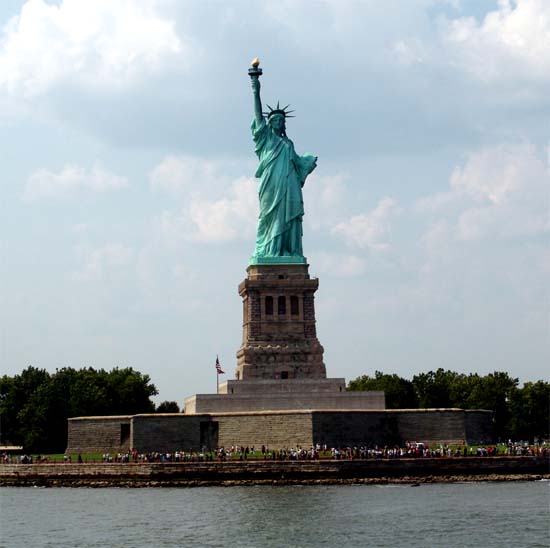
Located on 12-acre Liberty Island in New York Harbor, the Statue of Liberty was a gift of international friendship from the people of France to the people of the United States and is one of the most universal symbols of political freedom and democracy. The Statue of Liberty was dedicated on October 28, 1886 and was designated a National Monument on October 15, 1924.
Sculptor Frederic Auguste Bartholdi was commissioned to design a sculpture with the year 1876 in mind for completion, to commemorate the centennial of the American Declaration of Independence. Bartholdi required the assistance of an engineer to address structural issues associated with designing such as colossal copper sculpture. Alexandre Gustave Eiffel (designer of the Eiffel Tower) was commissioned to design the massive iron pylon and secondary skeletal framework which allows the Statue's copper skin to move independently yet stand upright.
The Statue was a joint effort between America and France and it was agreed upon that the American people were to build the pedestal, and the French people were responsible for the Statue and its assembly here in the United States.
The pedestal construction was finished in April of 1886. The Statue was completed in France in July, 1884 and arrived in New York Harbor in June of 1885 on board the French frigate "Isere" which transported the Statue of Liberty from France to the United States. In transit, the Statue was reduced to 350 individual pieces and packed in 214 crates. The Statue was re-assembled on her new pedestal in four months time. On October 28th 1886, the dedication of the Statue of Liberty took place in front of thousands of spectators. President Grover Cleveland accepted the Statue on behalf of the United States and said in part: "We will not forget that Liberty has here made her home; nor shall her chosen altar be neglected."
The second floor in the pedestal of the Statue, traces the history and symbolism of the Statue of Liberty through museum objects, photographs, prints, videos and oral histories. In addition to historical artifacts and descriptive text, full scale replicas of the Statue's face and foot are also on display.
Statistics Sheet
| Height from top of base to torch | 151'1" | 46.05m |
| Ground to tip of torch | 305'1" | 92.99m |
| Heel to top of head | 111'1" | 33.86m |
| Length of hand | 16'5" | 5.00m |
| Index finger | 8'0" | 2.44m |
| Head from chin to cranium | 17'3" | 5.26m |
| Head thickness from ear to ear | 10'0" | 3.05m |
| Distance across the eye | 2'6" | .76m |
| Length of nose | 4'6" | 1.37m |
| Length of right arm | 42'0" | 12.80m |
| Thickness of right arm | 12'0" | 3.66m |
| Thickness of waist | 35'0" | 10.67m |
| Width of mouth | 3'0" | .91m |
| Length of tablet | 23'7" | 7.19m |
| Width of tablet | 13'7" | 4.14m |
| Thickness of tablet | 2'0" | .61m |
| Ground to top of pedestal | 154'0" | 46.94m |
There are 25 windows in the crown which symbolize gemstones found on the earth and the heaven's rays shining over the world. The seven rays of the Statue's crown represent the seven seas and continents of the world. The tablet which the Statue holds in her left hand reads (in Roman numerals) "July 4th, 1776." The total weight of copper in the Statue is 62,000 pounds (31 tons) and the total weight of steel in the Statue is 250,000 pounds (125 tons). Total weight of the Statue's concrete foundation is 54 million pounds (27,000 tons). The copper sheeting of the Statue is 3/32 of an inch thick or 2.37mm.
Wind sway: winds of 50 miles per hour cause the Statue to sway 3 inches (7.62cm) and the torch sways 5 inches (12.70cm).
Given below are images taken while on the ferry to visit the Statue of Liberty
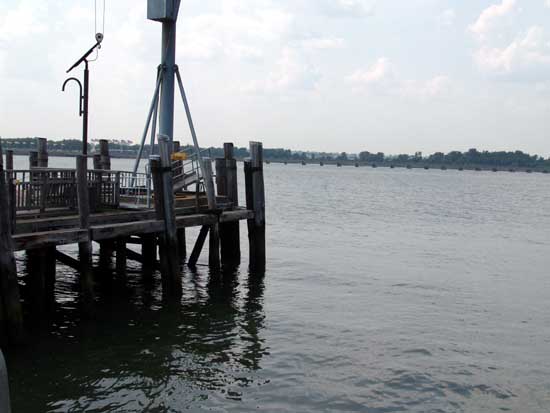
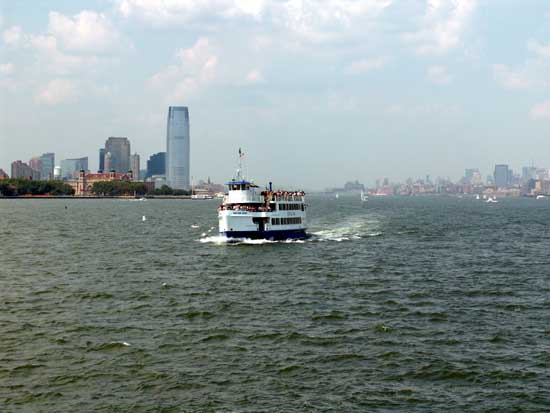
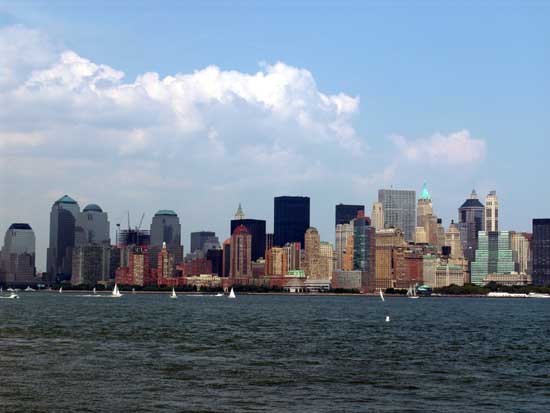
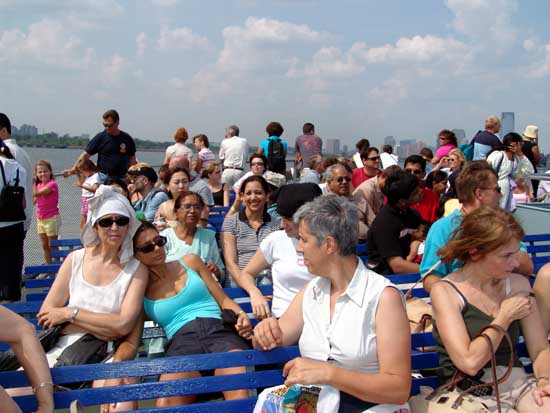
06-Apr-2004
More by : Rajender Krishan